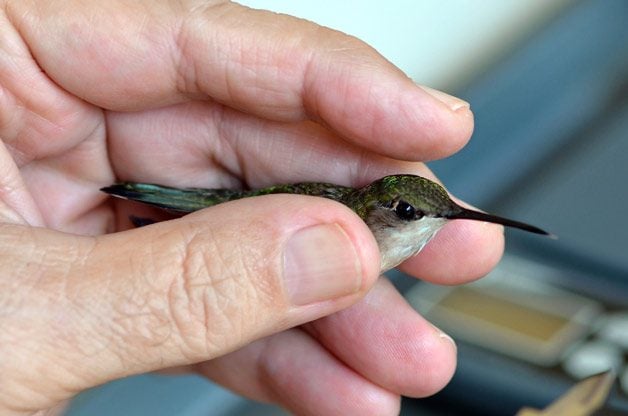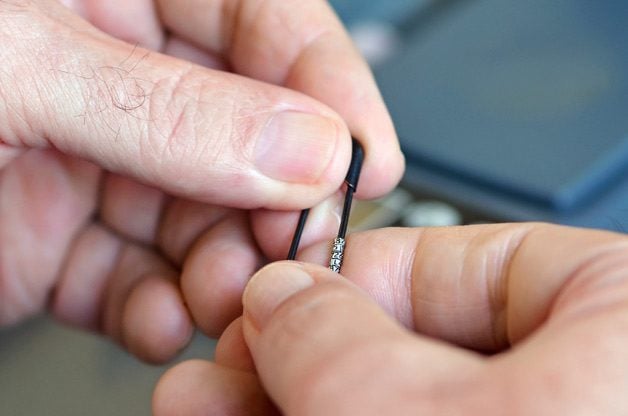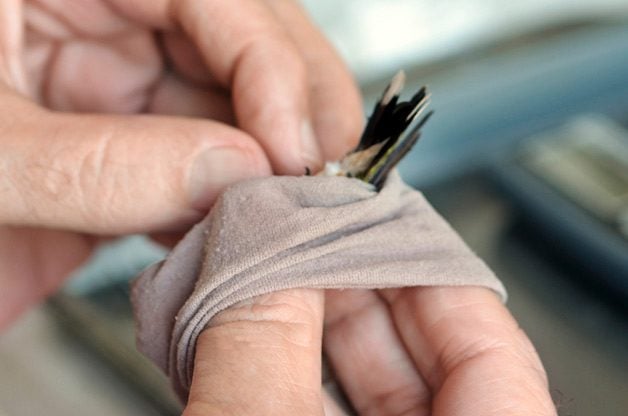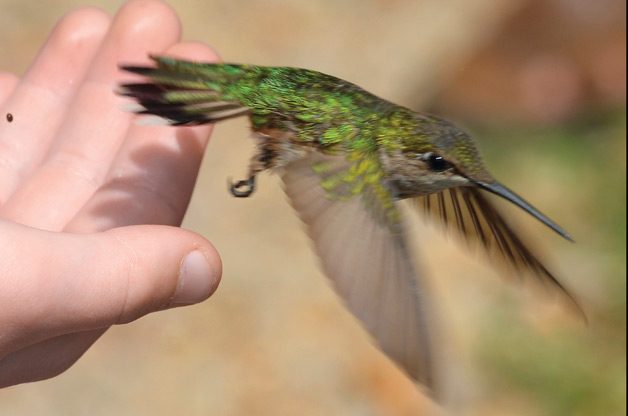Facts About Hummingbird Tracking and Banding
Updated: Mar. 22, 2022
You hear about banding of songbirds and raptors, but rarely about hummingbird tracking and banding. It's an extremely specialized activity.

You always hear about the banding of songbirds and raptors, but rarely about banding and tracking hummingbirds. Turns out that hummingbird banding is an extremely specialized activity. Read on to discover how it works, what makes it unique and a little about the people behind the research and tracking of these tiny treasures.
The Number of Banded Hummingbirds is Low
Hummingbird banding started long after songbird banding, so researchers don’t have nearly as much information on the tiny fliers as they do on other birds. According to the North American Bird Banding Program operated by the U.S. Geological Survey and the Canadian Wildlife Service, about 309,000 ruby-throated hummingbirds have been banded and tracked since 1960. By comparison, more than 30 million songbirds have been banded.
Check out proven hummingbird photography tips.
Hummingbird Tracking is a Useful Migration Research Tool
Most of what we do know about hummingbird migration is because of hummingbird tracking and banding. The data scientists have gathered thus far tell us amazing things. For instance, we know that ruby-throated hummingbirds follow the same migration routes every year. They also arrive at and leave from stopover points on almost the same date each year, within a few days.
Discover the top 15 colorful flowers hummingbirds like.
The Banding Process Does Not Harm Hummingbirds
Hummingbird feeders equipped with curtains, netting or cages are monitored, and when a bird visits, it flips a switch and the netting comes down or the cage closes. This is a more effective method for capturing hummingbirds than the large mist nets usually used in songbird banding.

Hummingbird Bands Are Incredibly Tiny
As you might expect, the bands that go around the leg of a hummingbird are minuscule—so small they fit around a toothpick or safety pin. Typically, they measure just 1.27-1.52 mm in diameter and 1.6 mm wide. Each band bears a letter prefix followed by a four-digit number. The letter represents a five-digit number that is too big to print on the tiny band.
Check out 17 jaw-dropping facts about hummingbirds.
You Can Help Report and Track Rare Hummingbirds
If you think you have a rare hummingbird visiting your backyard or a hummer that seems to be staying for the winter, banders may be interested in your guest. Increasingly, Western hummingbirds are showing up in the East, and you can help researchers find out why by alerting banders.
Learn the 15 types of hummingbirds found in the United States.

Hummingbird Banders Are a Specialized Group
Only about 150 people in the U.S. hold permits to band hummingbirds. They’re authorized to take part in the program after completing rigorous training. Unlike other bird bands, those made for hummingbirds are cut and sized by the banders themselves. Banders are also expected to follow a code of ethics.
Check out the ultimate bucket list for hummingbird lovers.
Hummingbird Banding is Quick
Hummingbirds aren’t in the banders’ hands for long. Banders work swiftly to record species, sex, age, weight, measurements and the birds’ overall condition. After that, banders sometimes offer the birds a quick drink at a sugar-water feeder before promptly releasing them.
Meet the world’s largest and smallest hummingbirds.

Timing and Location Are Important for Hummingbird Tracking
It makes sense to kick up hummingbird banding efforts during migration. Banders gather at crucial flyway areas. Alabama’s Fort Morgan Banding Station, for instance, is the first landfall and the last departure location along the Gulf of Mexico for thousands of migratory birds, including ruby-throats. Banding in southeast Arizona is especially important, because this part of the international flyway hosts the greatest diversity of hummingbird species anywhere north of Mexico. Arizona researchers are able to examine and track tropical species heading north as well as common migrants like the rufous and calliope hummingbirds.
Psst—you need to see these stunning hummingbird photos.
Hummingbird Banders Are Banders for Life
Take Bob and Martha Sargent, who founded the nonprofit Hummer/Bird Study Group for songbird and hummingbird tracking. Since they started their original banding station in their Clay, Alabama, backyard, more than 30,000 ruby-throats have been banded there. Other devoted banders spend years researching and tracking hummingbirds, running websites to spread awareness and doing banding demonstrations. So it’s true: Once a hummingbird bander, always a hummingbird bander.
